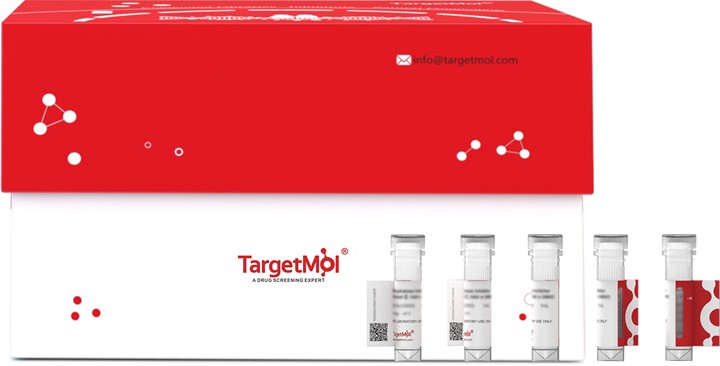Shopping Cart
Remove All Your shopping cart is currently empty
Your shopping cart is currently empty
Phosphinothricin N-acetyltransferase (PAT) is an enzyme that acetylates the free NH2 group of L-phosphinothricin (L-PPT) in the presence of acetyl-CoA as a co-substrate. It is highly specific for L-PPT and does not acetylate other L-amino acids or structurally similar molecules. L-PPT is a glutamate analog that can inhibit glutamine synthetase activity in plants, resulting in the accumulation of ammonia to toxic levels and impairment of photosynthesis. The introduction of a PAT gene into a plant genome can confer resistance to glufosinate herbicide during post-emergent applications.

| Pack Size | Price | USA Warehouse | Global Warehouse | Quantity |
|---|---|---|---|---|
| 5 μg | $80 | 7-10 days | 7-10 days | |
| 10 μg | $129 | 7-10 days | 7-10 days | |
| 20 μg | $198 | 7-10 days | 7-10 days | |
| 50 μg | $390 | 7-10 days | 7-10 days | |
| 100 μg | $626 | 7-10 days | 7-10 days | |
| 200 μg | $987 | 7-10 days | 7-10 days | |
| 500 μg | $1,900 | 7-10 days | 7-10 days | |
| 1 mg | $2,730 | 7-10 days | 7-10 days |
| Biological Activity | Activity has not been tested. It is theoretically active, but we cannot guarantee it. If you require protein activity, we recommend choosing the eukaryotic expression version first. |
| Description | Phosphinothricin N-acetyltransferase (PAT) is an enzyme that acetylates the free NH2 group of L-phosphinothricin (L-PPT) in the presence of acetyl-CoA as a co-substrate. It is highly specific for L-PPT and does not acetylate other L-amino acids or structurally similar molecules. L-PPT is a glutamate analog that can inhibit glutamine synthetase activity in plants, resulting in the accumulation of ammonia to toxic levels and impairment of photosynthesis. The introduction of a PAT gene into a plant genome can confer resistance to glufosinate herbicide during post-emergent applications. |
| Species | Streptomyces hygroscopicus |
| Expression System | E. coli |
| Tag | Tag Free |
| Accession Number | P16426 |
| Synonyms | PPT N-acetyltransferase,Phosphinothricin-resistance protein,Phosphinothricin N-acetyltransferase,bar |
| Amino Acid | Met1-Ile183 |
| Construction | Met1-Ile183 |
| Protein Purity | Greater than 95% as determined by reducing SDS-PAGE. (QC verified) |
| Molecular Weight | 18-20 KDa (reducing condition) |
| Endotoxin | < 0.1 ng/µg (1 EU/µg) as determined by LAL test. |
| Formulation | Lyophilized from a solution filtered through a 0.22 μm filter, containing 12.5 mM Tris-HCl, 50 mM NaCl, 5% Trehalose, 5% Mannitol, 0.01% Tween 80, 2 mM DTT, 1 mM EDTA, pH8.5. |
| Reconstitution | Reconstitute the lyophilized protein in distilled water. The product concentration should not be less than 100 μg/ml. Before opening, centrifuge the tube to collect powder at the bottom. After adding the reconstitution buffer, avoid vortexing or pipetting for mixing. |
| Stability & Storage | Lyophilized powders can be stably stored for over 12 months, while liquid products can be stored for 6-12 months at -80°C. For reconstituted protein solutions, the solution can be stored at -20°C to -80°C for at least 3 months. Please avoid multiple freeze-thaw cycles and store products in aliquots. |
| Shipping | In general, Lyophilized powders are shipping with blue ice. Solutions are shipping with dry ice. |
| Research Background | Phosphinothricin N-acetyltransferase (PAT) is an enzyme that acetylates the free NH2 group of L-phosphinothricin (L-PPT) in the presence of acetyl-CoA as a co-substrate. It is highly specific for L-PPT and does not acetylate other L-amino acids or structurally similar molecules. L-PPT is a glutamate analog that can inhibit glutamine synthetase activity in plants, resulting in the accumulation of ammonia to toxic levels and impairment of photosynthesis. The introduction of a PAT gene into a plant genome can confer resistance to glufosinate herbicide during post-emergent applications. |
| Size | Quantity | Unit Price | Amount | Operation |
|---|

Copyright © 2015-2025 TargetMol Chemicals Inc. All Rights Reserved.